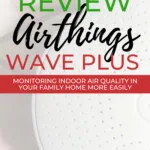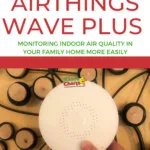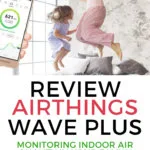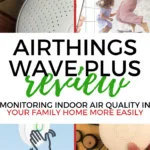This is a sponsored review
We are all having to spend more time indoors at the moment due to the current situation. Therefore is seems sensible to monitor the quality of the air that we are exposed to inside our home, and how different actions and activity can make a difference to the constituents. How can we actually do that though? Well we bring you this Airthings Wave Plus review (£229.99). This is a device that you can place within your home, and sync to your smart device and an app. Using this app, you can then take a look at your indoor air quality at the touch of a button.

What do we mean by monitoring indoor air quality?
We were provided with the Airthings Wave Plus, which monitors a number of constituents within the air.
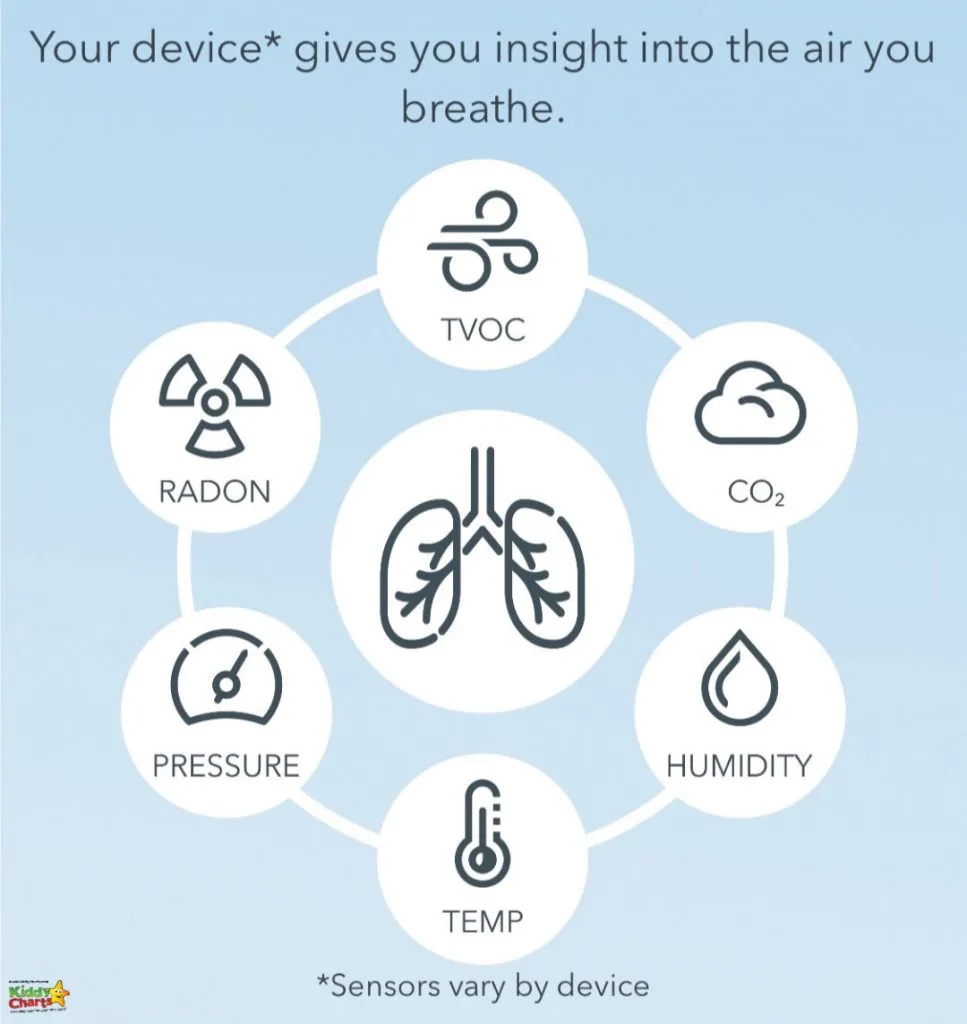
We focused on looking at:
- CO2, the greenhouse gas of course,
- TVOCs; Volatile Organic Compounds emitted from chemicals in everyday products,
- Humidity; obviously the level of water droplets within the air,
- Temperature; how hot/cool the environment is, and finally
- Air pressure; the air pressure in your home.

Our house is open plan downstairs, and so the kitchen is right in our living area – this can mean that it can get quite warm inside, as well as smells/chemicals from cooking and cleaning affecting the indoor air quality in our family spaces.
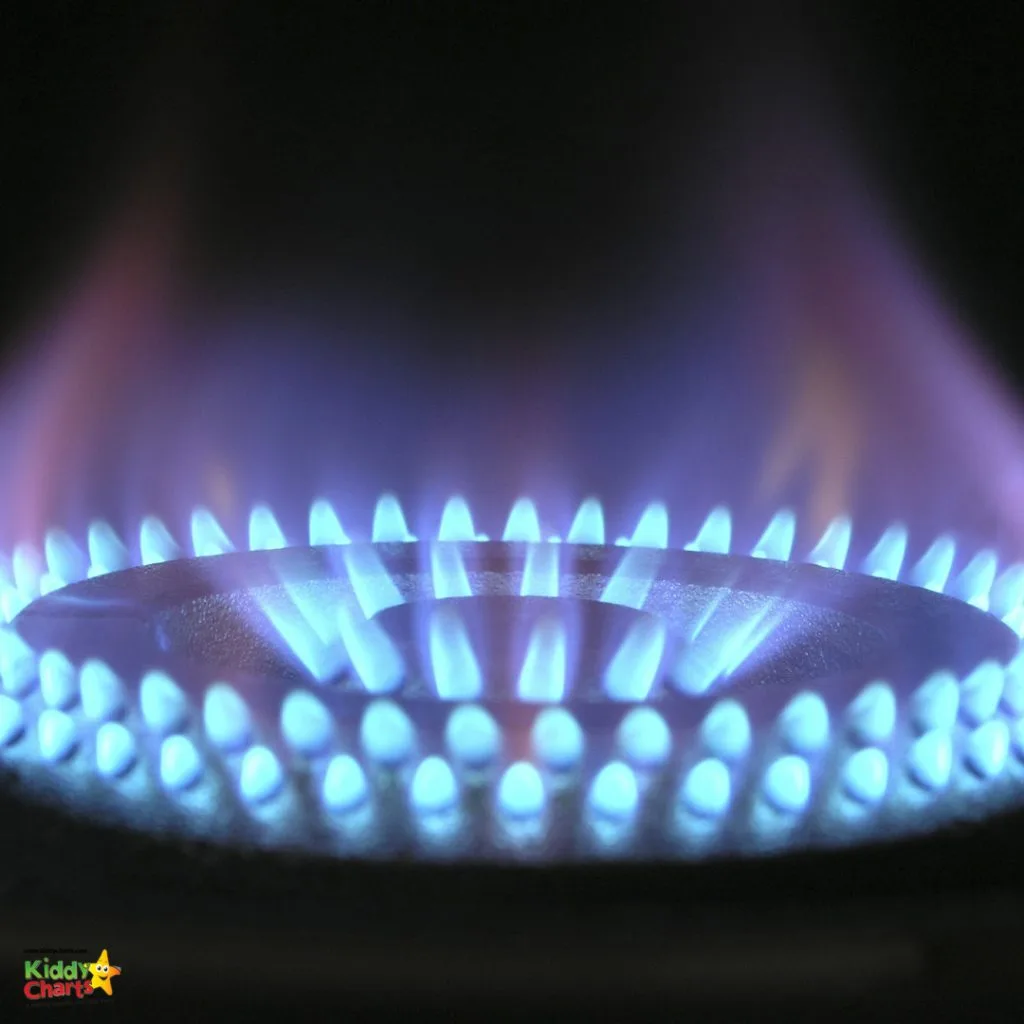
It was interesting to take a look at how different actions and activities affected the overall quality of the air within our indoor environment.
Just FYI – The Airthings Wave Plus also monitors Radon levels, whereas the Airthings Mini (£79), does not.
How does the Airthings Wave Plus work?
The Airthings Wave Plus is a small device that you place within the room you wish to monitor, and then connect to the Airthings Wave App, which is available from both Apple App Store and Google Play.
It needs to be left for seven days to calibrate before it can monitor air quality effectively. After this, you can read the details of the air quality on the app provided with the device.
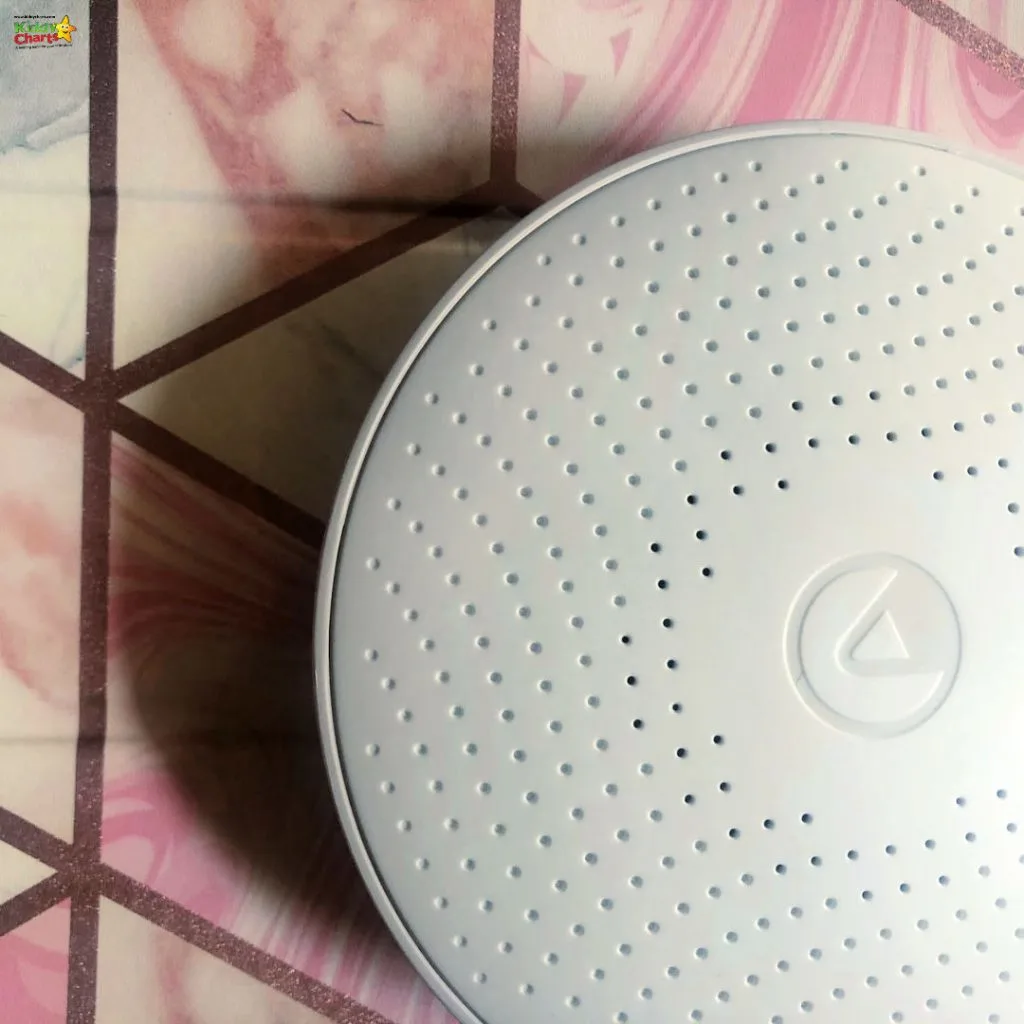
Airthings support the British Lung Foundation here in the UK to help improve the quality of life for those living with lung conditions. The BLF Living Well alliance provide support and care for those living with lung conditions in the UK, including offering 230 Breathe Easy Support groups and helping 20,000 online members.
One can imagine it is particularly important to monitor the TVOCs in the home environment for someone with a lung condition; TVOCs are chemicals that can be released in the home from cooking fumes, burning candles and fires, fragrances, cleaning and craft products, etc.

How easy is Airthings to use?
This device was super easy to set up – there was a clear instruction booklet with it, and it took 5 minutes to download the app, find a suitable place in the home, and set it calibrating.

Synching with my smart phone (Apple iPhone X), was equally easy, and the detail within the app is clear and effective, with you being able to monitor current levels, alongside trends over the last week, month, and even a year.
Thanksfully, as some of the terms are likely to be new to most people, there is a good online help interface, which enables you to connect to the Airthings website if you don’t understand some of the terminology.
The system itself offers two easy ways to monitor the air quality at any one time. You can:
- Wave at the app (which the kids love!) and the sensor within the middle with tell you using a traffic light system what the air quality is like, or
- You can visit the dashboard either on your computer, or your smartphone to check how the air is currently, or over time.
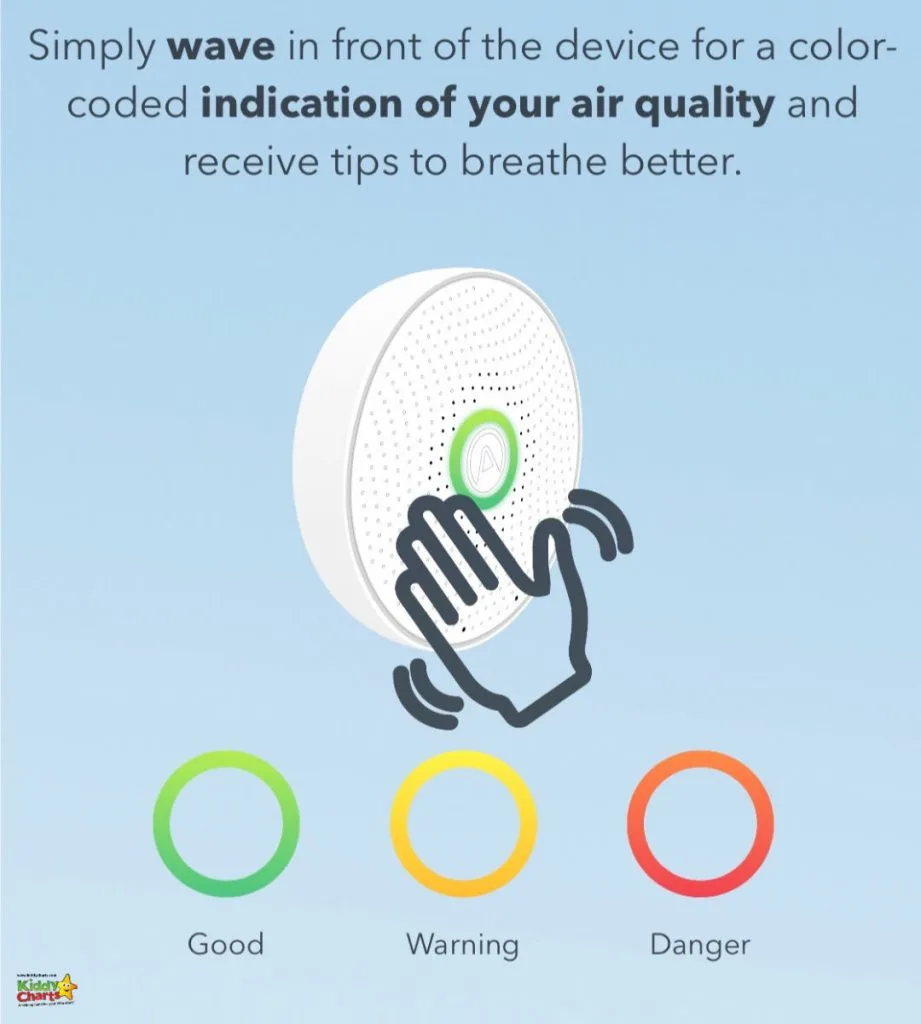
You do need to make sure your smart device is in range of the sensor as otherwise the device cannot connect and add current air quality. So for example, you cannot monitor air quality if you are on one floor of the house, and the sensor is on another.
What did we look at using Airthings Wave Plus in the home?
This is a fascinating device, and shows you how small actions can have an impact on the air quality within your family home.
For example – this is a graph of the activity in 24 hours within our household:

Can you see the spike in TVOCs – the orange peak towards the right-hand side of the graph?
This was caused by us deliberating leaving the window closed in our kitchen while my son cooked his chicken nuggets, which produced a little smoke and grease in the kitchen 😂
You can see from overall analysis of the TVOCs on our house that when we have been able to have the doors open due to good weather, the peaks for cooking are much lower. We have sliding folding doors near the kitchen and this can make a real difference in the levels within this environment.
On the 8th and 9th May it was 23 degrees, so we could open our doors, and look at the difference this has made to the TVOCs levels……

It is interesting how actions like this can have an impact on the statistics within the app.
The interface on the computer is easy to read (as you can see from above) – but the app can show you the trends too – this has the same details from above. This is how you can see details on the app:
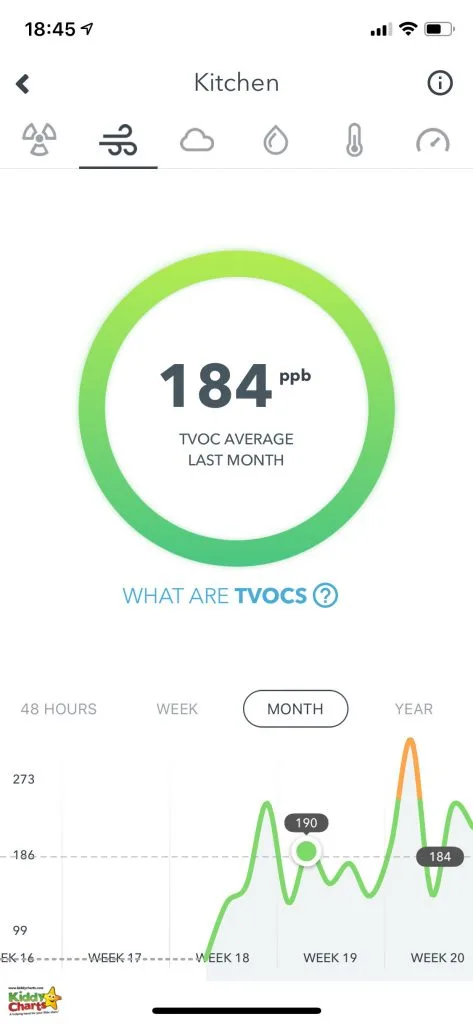
The longer periods of time are a little harder to read on the app, but it still gives you a good idea of trends.
You can – in fact – see the really high peak on Thursday 14th May – which seems to have been caused by us cooking a meal with the doors and windows closed again!
It is so simple to check the levels too – with the action of waving at the device giving you an indicator. If its amber, this should prompt you to check your dashboard of course.
Overall 8/10
It is so fascinating to be able to check the level of our indoor air quality, and can imagine that this might be of extra benefit to those that suffer from asthma, and other lung disorders; hence the partnership that Airthings have here in the UK.
For us, it was a timely reminder, given the increasing time indoors, to make small changes to our habits to improve indoor air quality, from opening windows when we are cooking, to making sure we use chemical cleaners appropriately in more confined areas.
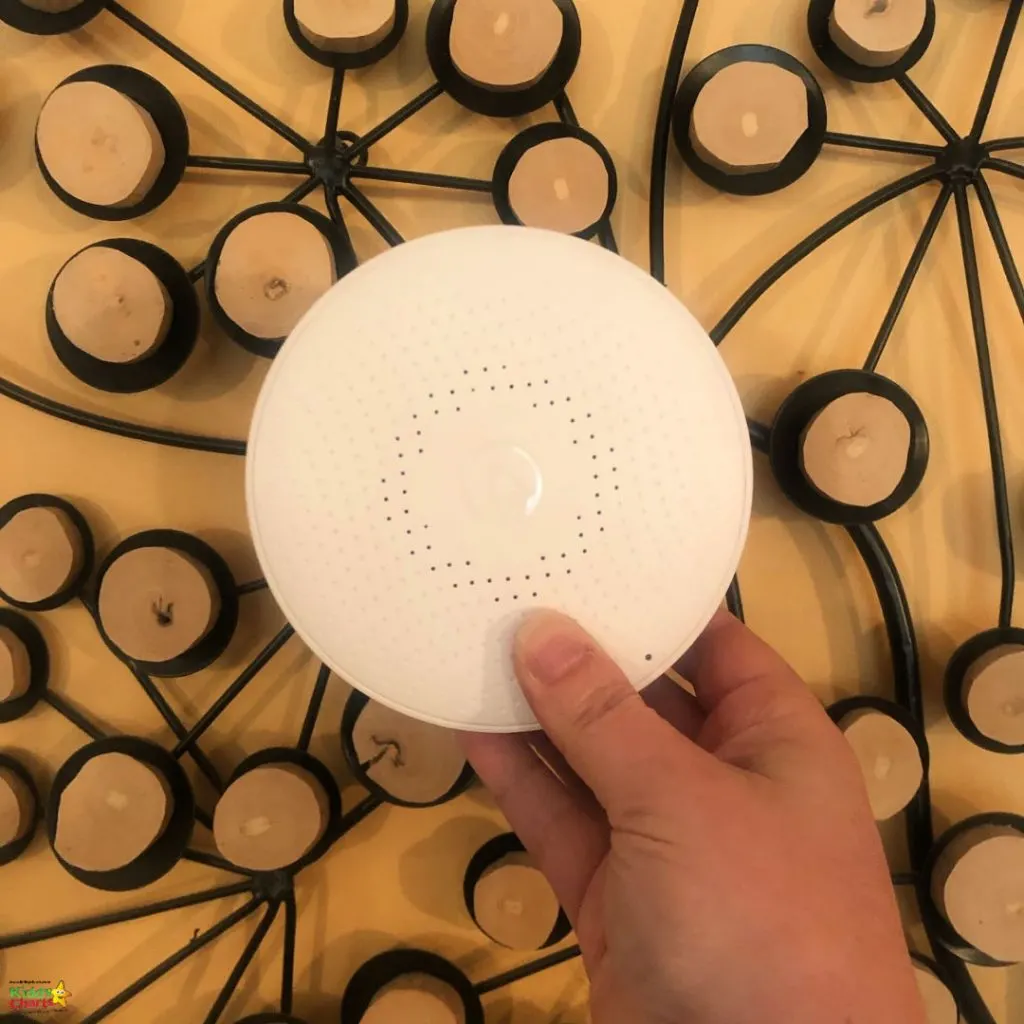
It was relatively easy to set up, but we would recommend that you do a little research before you learn how to interpret the information, so you understand all the different metrics available. Once you have done this, it is easy to monitor and operate the device. You just need a little patience to get to know the terminology for everything you are looking at. If you are interested in checking the air in your home, particularly as we are spending more time indoors at the moment, this is a good option to have.
Do be careful when you initially set up that you remove the plastic tag in the device – as otherwise, you won’t be able to get your phone to communicate with it *not speaking from experience *obvs*
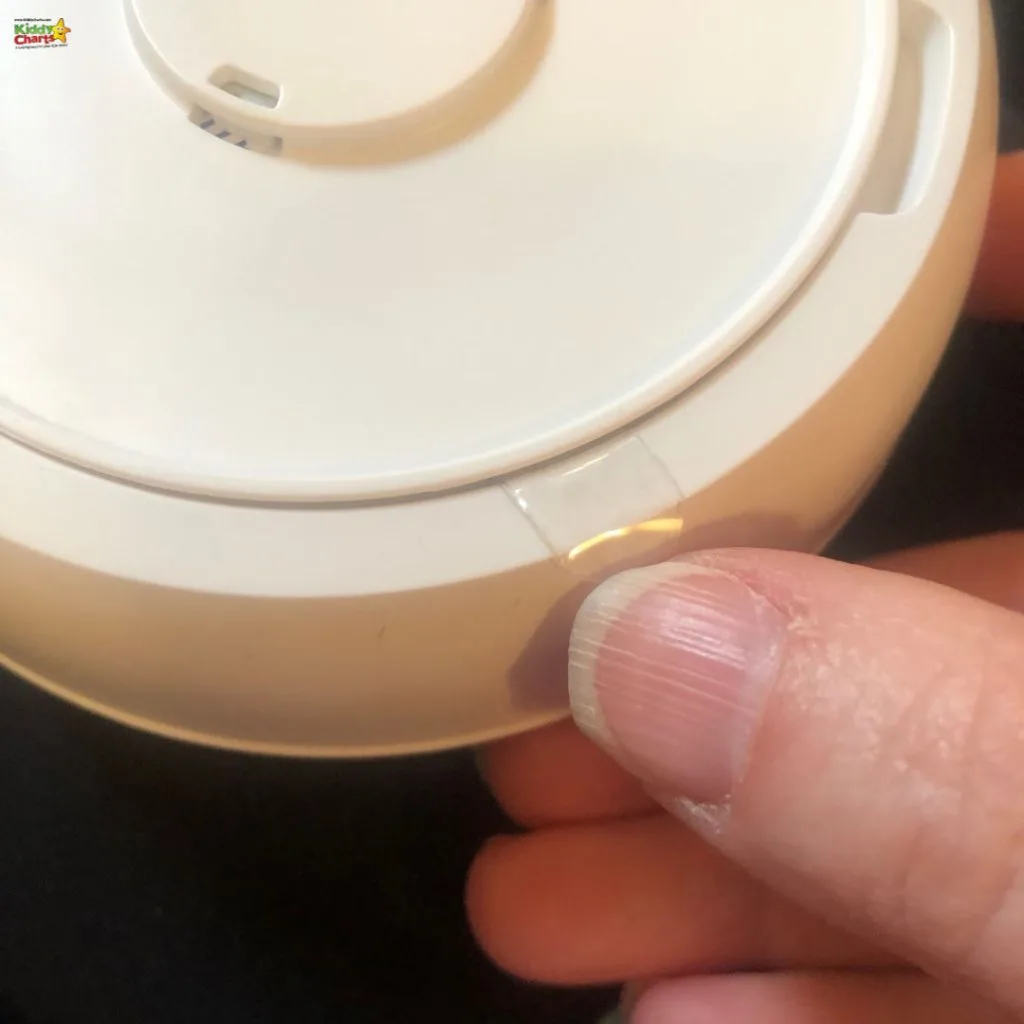
It does have a high price point, but there are a few different products, so you can pick the one that suits your budget and needs the most. It also connects to Alexa, which is a bonus; so you can ask Alexa and she’ll let you know how the indoor air quality is anytime. 😂
We were provided with compensation for this Airthings wave plus review, and the product; we have reviewed it honestly within our home as a result.

